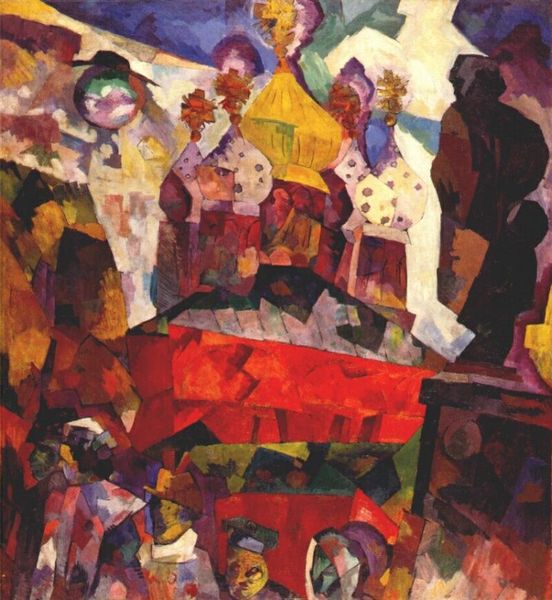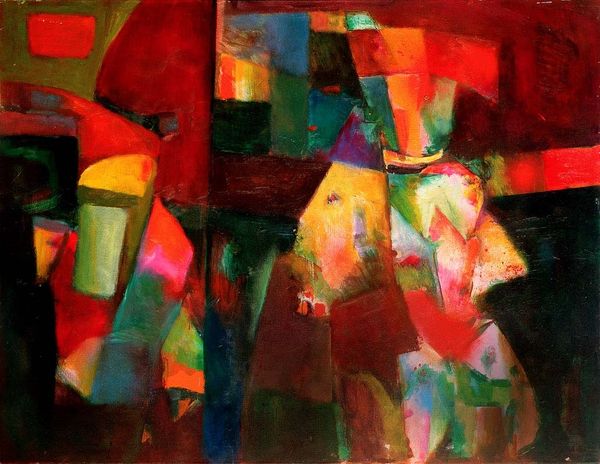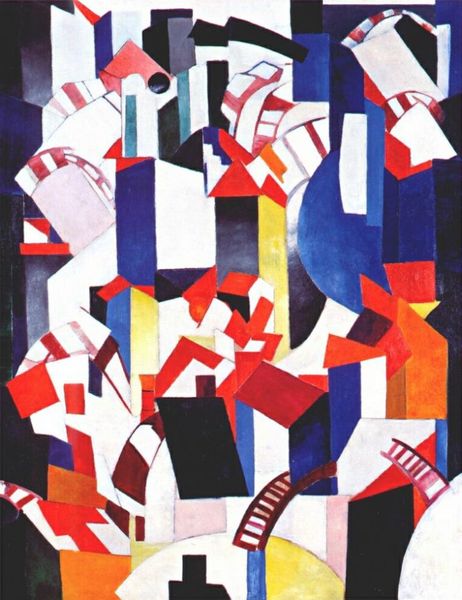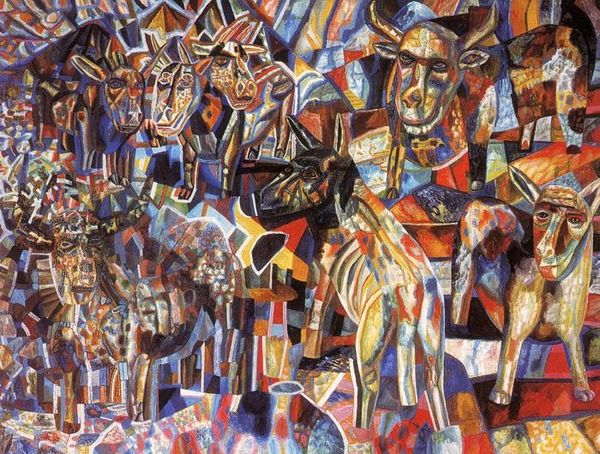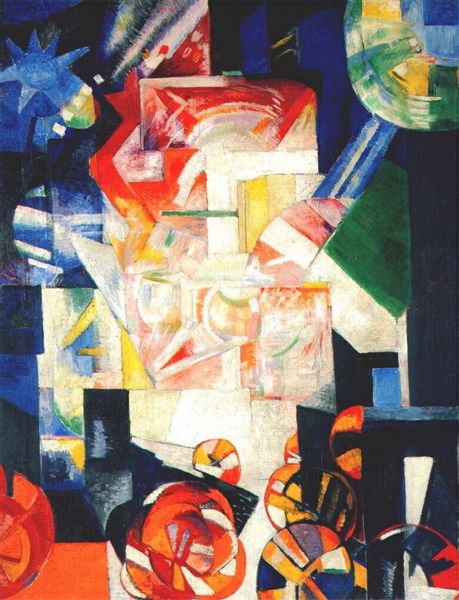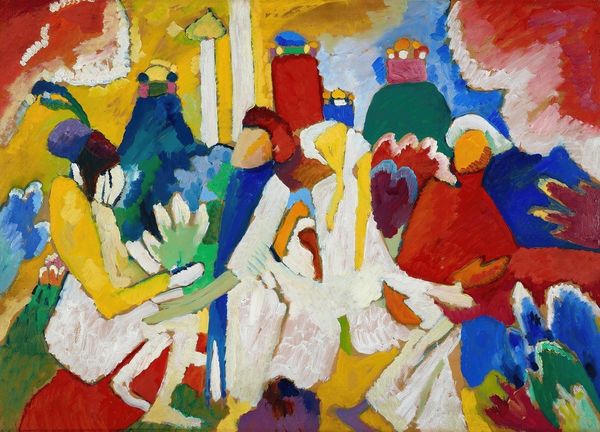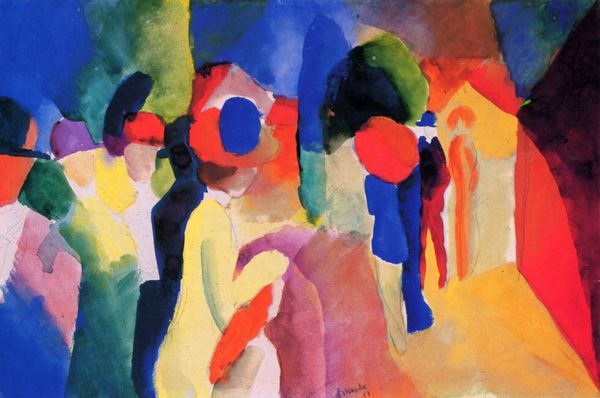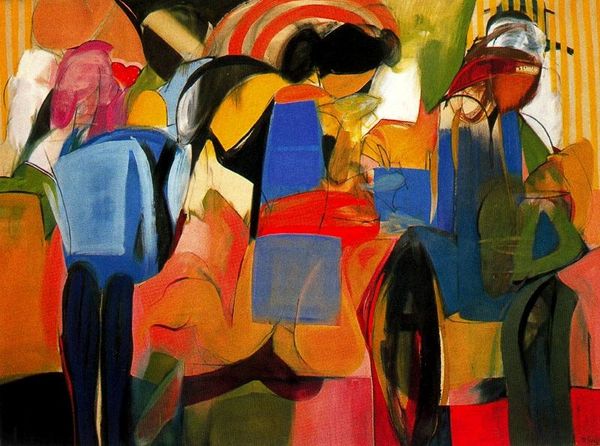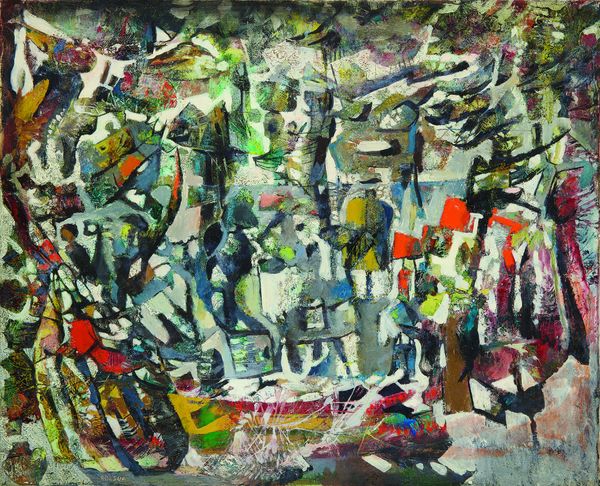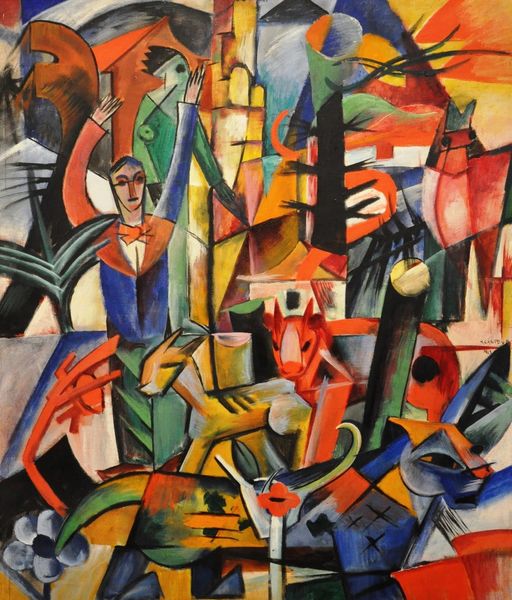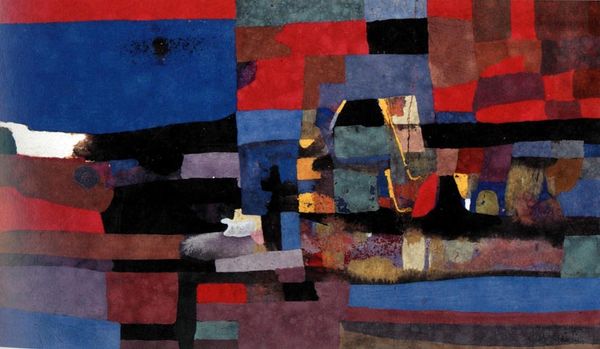
painting
#
cubism
#
abstract painting
#
painting
#
geometric
#
russian-avant-garde
#
cityscape
#
futurism
Dimensions: 189 x 179 cm
Copyright: Public domain
Editor: So, this vibrant canvas is Aristarkh Lentulov's "Moscow," painted in 1913. It’s an oil painting depicting the city, but it’s exploded into all these dynamic, almost violent, shapes and colours. It feels so unstable, like the city is about to topple over. What do you see when you look at it? Curator: I see an investigation into the very materials and labor involved in creating this kind of abstracted cityscape. Lentulov is challenging traditional hierarchies, isn't he? Think about it – this isn't a pristine, idealized portrait of Moscow. He's actively deconstructing its architectural forms. He’s pushing the medium of painting itself to its limit. Do you notice the thickness of the paint and the way it’s applied? Editor: Absolutely. You can practically feel the paint on the canvas. It looks so impulsive! Curator: Precisely. It brings attention to the *making* of the art, the labour involved in depicting Moscow at a time when Russia was experiencing rapid industrialisation and social upheaval. Are we seeing anxieties around urban development being rendered here, not through social commentary but the material destruction of form? What are his formal strategies to destroy familiar forms of representation, making it "abstract"? Editor: So it’s less about *what* Moscow looks like and more about *how* he is presenting materials as labor as the artist confronts the chaos of change? Curator: Exactly. He transforms recognizable architecture into something almost unrecognisable. In doing so, he invites us to contemplate the material realities that gave rise to the canvas in the first place and what it may anticipate from social upheaval and change. It is meant to evoke what a changed world order looks like when we examine closely materials and forms in the 20th century. Editor: That completely shifts my perspective. It's no longer just a jumble of shapes but an active representation of transformation and an assertion of Russian artistic labor. Curator: Yes, and this invites viewers to engage with what will come from labor as a cultural material. We see not just an image but a consequence that comes from all that we put our hands to, for better or worse.
Comments
No comments
Be the first to comment and join the conversation on the ultimate creative platform.
